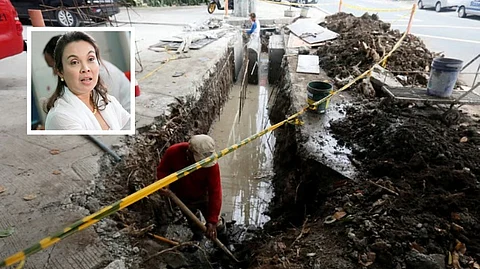
- NEWS
- the EDIT
- COMMENTARY
- BUSINESS
- LIFE
- SHOW
- ACTION
- GLOBAL GOALS
- SNAPS
- DYARYO TIRADA
- MORE

Senator Loren Legarda on Sunday questioned the Department of Public Works and Highways (DPWH) over the disappearance of many natural waterways across the country, asking, “Why did they disappear? Who approved it?”
“I will ask the DPWH to show the location of waterways,” she said, noting the importance of identifying and preserving esteros, canals and other water channels as a crucial part of any flood control strategy.
Legarda made the statement while pushing for a comprehensive, technology-driven master plan to address the country’s long-standing flood problem — one allegedly worsened by corruption in public works projects.
No less than President Ferdinand Marcos Jr., in his fourth State of the Nation Address, vowed to prosecute those who profited from questionable flood control undertakings.
In an interview, Legarda emphasized the role of modern technology and integrated planning. She cited Doppler radar as one effective tool, explaining that it can monitor both the volume and intensity of rainfall. “It can measure the amount of rain so we can prepare,” she noted.
She also highlighted the use of satellite imagery in tracking the real-time impact of natural disasters and assessing infrastructure projects, especially within the context of climate change.
Legarda reiterated the need for a master plan that aligns with the national budget and includes a thorough evaluation of the structural integrity of ongoing and completed flood control projects.
“Flooding is not caused solely by rainfall but also by poor planning and the misuse of government funds,” she said. “The structural integrity of completed structures must be reviewed. Look at the maps showing where the esteros, canals, and waterways are.”
She added that evaluating such projects should go beyond financial audits. “An audit should not be limited to financials. It should include performance audits to assess which projects are effective and beneficial, and which are substandard,” she stressed.
Another senator, Panfilo Lacson, is presently scrutinizing the flood control budget allocations in the 2025 General Appropriations Act, warning of ghost projects that have plagued the past few years.
Legarda urged transparency throughout the entire budgeting process—from preparation and amendments to the final passage of the law—and insisted that public funds must not be wasted on ineffective flood control measures.
“Let the waterways remain as waterways,” she said, underscoring the need to preserve natural drainage paths and ensure that future projects comply with environmental and engineering standards.
She emphasized that the National Expenditure Program for 2026 and the General Appropriations Act for 2025 must be implemented and thoroughly reviewed to avoid repeating the mistakes of 2024 and 2025.
“These standards and practices must apply across all government agencies, not just in flood control and infrastructure,” she added.
###
